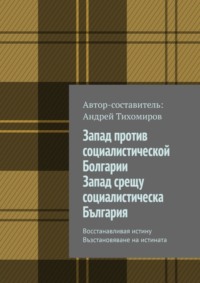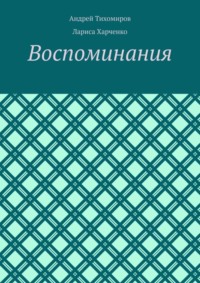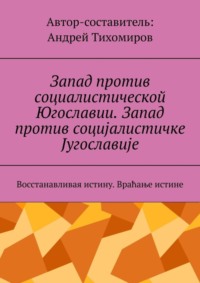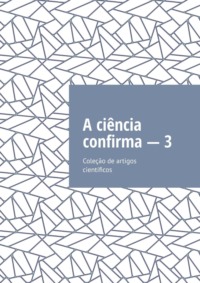
Полная версия
Science confirms – 2. Collection of scientific articles

Science confirms – 2
Collection of scientific articles
Андрей Тихомиров
© Андрей Тихомиров, 2023
ISBN 978-5-0059-4956-1 (т. 2)
ISBN 978-5-0059-4957-8
Created with Ridero smart publishing system
The Biblical Book of Exodus (excerpts)
Most likely, the Red Sea was actually a reed lake, whose water temporarily really parted during the east wind (see Exodus 14:21). The proof of this is the events of March 2021. The container ship Ever Given, which blocked the Suez Canal, was taken off the shoal. On March 28, the canal administration announced that Egyptian President Abdel Fattah al-Sisi had ordered the unloading of the container ship Ever Given. The container ship Ever Given under the flag of Panama completely ran aground in the south of the Suez Canal on March 23, blocking traffic. (THE JAPANESE COMPANY SHOHEI KISEN, which MANAGES THE SHIP, EXPLAINED WHAT HAPPENED WITH A STRONG WIND – highlighted by me – Tikhomirov A.E.). It was reported that there are more than 20 thousand heavy containers on board the ship, which were transported from China to the Dutch port of Rotterdam. It is one of the largest vessels in its class: its length reaches 400 m, width – 59 m, more than 400 vessels are waiting to pass through the channel. The process is expected to take about three days. Experts believe that global logistics companies will have to reconsider transport routes and approaches to choosing the size of ships, as well as change the time planning for the delivery of goods to ports. And a week of downtime of the sea route will cost the world economy $70 billion. Disruption of transport and logistics chains will also lead to the diversification of transport routes from Asia to Europe and vice versa. The main beneficiaries may be the Northern Sea Route and the railway project – the Silk Road from China to Europe.
Quotes from the book by Tikhomirov A.E. «Ridero», Yekaterinburg, 2017: «Exodus»: https://ridero.ru/books/iskhod_2/
9: «9 And the dust will rise up throughout all the land of Egypt, and there will be an inflammation with boils on people and cattle throughout all the land of Egypt. (Egypt, lying along the Nile, among deserts, depends on the river and the desert. There are various natural disasters here: the khamsin blows – the wind that carries the dust of the desert, when it gets dark during the day and this „darkness“ grits on the teeth; there are invasions of parasites, locusts, hail, there are epidemics and epizootics, there is a flowering of water that becomes like blood and unsuitable for drinking. It has to be filtered with earth, pulling holes along the shore near the water. According to the law of the Babylonian king Hammurabi, the epidemic is defined as „the touch of God“).»
9:33 And Moses went out of the city from Pharaoh, and stretched out his hands to the LORD, and the thunder and hail ceased, and the rain ceased to fall on the earth. (Dispersal of clouds, clouds – clouds are constantly moving and «dispersed» use their knowledge and information about wind, atmosphere, etc. to «disperse» clouds, clouds, stop thunder, hail, rain. In addition, it has been scientifically proven that, for example, only seriously ill people react to «changes» in solar activity, while healthy people do not notice «changes». The relationship was proved (this is the development of A.L. Chizhevsky et al.) between changes in the Earth’s magnetic field and an increase (decrease) in the number of patients with myocardial infarction, if these people have already been ill. Apparently, there is also a relationship between «somewhat mental» sick people and electrical discharges emanating from thunderclouds. Some people (priests, shamans and not only) in trance perceive electrical discharges better than others and can, as it were, «disperse clouds», i.e. perceive lightning electrical discharges and feel the weather, understand where clouds and clouds can go).»
10: «13 And Moses stretched out his rod over the land of Egypt, and the LORD brought an east wind upon the land, [which lasted] all that day and all night. Morning came, and the east wind struck locusts. (That is, the locusts came from the east, and this is the Sinai Peninsula, where the locusts most likely already were, and the priest knew about it).»
10: «19 And the Lord raised up a very strong western wind from the opposite side, and he carried the locusts and threw them into the Red Sea: there was not a single one left locusts in the whole country of Egypt. (The wind helped).»
10:21 And the LORD said to Moses, Stretch out your hand toward heaven, and there will be darkness in the land of Egypt, a palpable darkness. (There is a hydroexplosive type of volcanic eruption occurring in shallow conditions of oceans and seas, characterized by the formation of a large amount of steam arising from the contact of incandescent magma and seawater. During eruptions, sometimes a volcanic structure collapses with the formation of a caldera – a large depression with a diameter of up to 16 km and a depth of up to 1000 m. When magma rises, the external pressure weakens, gases and liquid products associated with it escape to the surface, and a volcano eruption occurs. If ancient rocks, not magma, are brought to the surface, and water vapor formed by heating underground waters prevails among the gases, then such an eruption is called phreatic. The lava that has risen to the earth’s surface does not always reach this surface. It only raises layers of sedimentary rocks and solidifies in the form of a compact body (laccolith), forming a kind of system of low mountains. All the phenomena preceding, accompanying and following the actual eruption of a volcano are called volcanic and sometimes stretch for a long time – not only for years, but also for whole decades and centuries. The harbinger of a volcanic eruption is often an underground rumble, shocks and tremors of an earthquake. The springs on the slopes and at the foot of the volcano dry up or decrease, or, conversely, increase their activity. Cracks appear on the slopes and in the crater, releasing suffocating gases or hot water. Occasionally, gases spread more or less far and destroy small animals and vegetation that covered the slopes of a long-dormant volcano. An eruption often begins with the release of a column of black smoke from the crater, rising high up (from 1 to 5 km) and then spreading out in the air in the form of a cloud of various shapes, sometimes resembling a pine tree (pine with a flat top). Gradually, this pillar becomes darker and wider, the entire top of the volcano is shrouded in thick clouds, and a thunderstorm with a downpour often breaks out. At the same time, large and small incandescent fragments of rocks captured by the pressure of hot gases from the crater are ejected from the crater. Their flight can be well observed at night in the form of fiery dots rising above the crater. From the clouds carried by the wind in one direction or the other, the precipitation of fine material begins – volcanic ash, covering not only the slopes of the volcano, but also the surroundings, sometimes at a distance of several hundred kilometers (downwind), and forming a loose layer of varying thickness during strong eruptions (depending on the distance to the crater), which also often destroys vegetation by covering it. The amount of volcanic debris and ash thrown into the air sometimes reaches tens of millions, and sometimes hundreds of millions of cubic meters. The fall of ash in such eruptions can be so thick that the day turns into a dark night. A similar picture was observed during the eruption of Shiveluch in Kamchatka in 1854, when such a large amount of volcanic ash fell that during the day there was impenetrable darkness in a place located 50 km from the volcano. When all these phenomena reach the greatest tension, fiery liquid lava pours out of the crater of the volcano, sometimes after a strong explosion. It overflows over the edge of the crater and flows down the slopes of the volcano. Tangible darkness is ashes that can be felt).»
13: «21 And the LORD went before them by day in a pillar of cloud, showing them the way, and by night in a pillar of fire, shining on them, that they might go by day and by night. (Khamsin is a hot, dry wind that turns into cloud pillars, observed in Egypt in the spring months, the air is filled with hot sand dust. Samum is a dry, hot wind in the deserts of Arabia and North Africa, locals call it „fire wind“, „breath of death“, blows with great force and raises large masses of sand that cover the sun, observed most often in spring, guides light torches so that you can see. Sirocco is a southerly wind that brings heated air from the deserts. Dust tornadoes (whirlwinds) are formed in an ascending air stream that has arisen over dry soil overheated by sunlight in dry steppes and deserts, in particular, in the Sahara, Arabia, Egypt. There are also fire tornadoes. A fire tornado (or firestorm) is an atmospheric phenomenon formed when the scattered fires that have arisen combine into one. The air above it heats up, its density decreases and it rises up. From below, cold air masses from the periphery enter its place. The incoming air is also heated. Oxygen suction acts like a bellows. Stable centripetal directional flows are formed, spiraling from the ground to a height of up to five kilometers. There is a chimney effect. The pressure of hot air reaches hurricane speeds. The temperature can rise up to 1000C. Everything burns or melts. At the same time, everything that is nearby is „sucked“ into the fire. And so on until everything that can burn burns down. In addition, geophysicists have uncovered the secret of strange lights, sometimes preceding earthquakes. These glows occur in rift zones, where special charge carriers appear in rocks. Since the birth of seismology as a science in the 19th century, many scientists have begun to think about the nature of some phenomena that may be harbingers of aftershocks. Perhaps one of the strangest such phenomena, sometimes bearing a touch of mysticism, are the glow in the atmosphere that people have been observing for centuries on the eve of earthquakes. In the Russian-language literature, the name „earthquake lights“ has taken root for them, abroad they are called „earthquake lights“ or EQL for short. Their study on a scientific basis began relatively recently in many countries. The first scientific work on lights was written by the Irish engineer Robert Mallet in 1851. In it, he listed many cases of observing lights, starting from the 17th century BC and ending in 1842. Geologist Robert Theriot, an employee of the Ministry of Natural Resources of the Canadian province of Quebec, in his article published in the journal Seismological Research Letters, tried to systematize information about observations of earthquake lights and find out what leads to their occurrence. Having researched historical sources, Therio analyzed 65 documented appearances of lights that have been observed since 1600 AD in Europe and North America. Comparing the eyewitness data with the currently available data on the geological structure of earthquake sites, the scientist came to the conclusion that the majority of cases of observation of lights occur in areas of rift zones – areas of rupture of the earth’s crust formed as a result of its longitudinal movement or fracture. It turned out that the vast majority of documented luminescence was observed near the so—called grabens – areas of the earth’s crust lowered along steep vertical cliffs. An example of such a geological formation is the depression of Lake Baikal. One of the last documented glows occurred on the eve of the devastating earthquake of 2009 in Italian L’Aquila. Then, just a few seconds before the earthquake, local residents noticed 10-centimeter lights hovering over the cobblestone Francesco Crispi Street in the historic center of the city. On November 12, 1988, a bright, purplish-pink ball was seen moving in the sky near Quebec 11 days before a powerful earthquake. And two days before the devastating earthquake in San Francisco in 1906, which killed up to 3 thousand people, people observed streams of light spreading along the earth’s surface. A common property of all areas where earthquake lights were observed was the presence of deep vertical faults, whose role in the formation and propagation of the glow is not completely clear. „We don’t know exactly why most of the glow is associated with rift zones and not with other types of faults, but unlike other faults that can form at an angle of 30—35 degrees, for example in subduction zones, cases of glow are associated with subvertical faults,“ Terio explained. The magnitude of the earthquakes that were included in the list of analyzed ones lay in the range of 3.6—9.2. And the lights themselves had different shapes and sizes, although most of them were spherical lights moving or resting, or flashes rising from the ground. The time of observation of the lights and their distance to the epicenters of the earthquakes were different. Most of the lights were observed before or during earthquakes, and extremely rarely after. This led scientists to believe that the rapid accumulation of mechanical stresses in the earth’s crust and their changes at the time of propagation of seismic waves leads to the emergence of fires. Positive charge carriers (holes) arising from stresses in rocks flow rapidly along the stress gradient, reach the surface, where air molecules ionize and cause it to glow. According to Theriot, he remembered most of all the case with a resident of Aquila. This man, seeing the lights from the house two hours before the earthquake, rushed to his family and took her to a safe place. „This is one of the very few documented cases where someone acted upon noticing the earthquake lights. These lights, as a harbinger phenomenon, in combination with other types of parameters, will someday be able to warn about strong earthquakes,“ explained scientist Pavel Kotlyar. Here, most likely, there was not only an earthquake, but also the eruption of several volcanoes, including underground and underwater, since this is a seismically active region where the plates of the Eurasian and African continents converge, which led to such „miracles“).»
13: «22 The pillar of cloud did not leave during the day and a pillar of fire at night on behalf of the people. (That is, the weather was very windy and there were constant tornadoes, which were used by skillful backstage conductors as a distraction, lighting torches at night).»
Chapter 14 (as the most important is given in full)
«1 And the LORD spake unto Moses, saying: (The gentleman talks to Moses in this way, which proves that he knows the language that Moses spoke).
2 Tell the children of Israel to turn and encamp before Pi-Hahiroth, between Migdol and the sea, before Baal-Zephon; set up a camp opposite him by the sea. (Baal-Zephon (Suez) is the northern tip of the Gulf of Suez. Migdol may have been a watchtower located in a strategically important location on Mount Jebel Ataka. Pi-Gahirof was located not far from the Red Sea – where the only way of retreat from the approaching Egyptian army lay through the sea. Egyptian fortresses were scattered throughout the country, including in the Sinai Peninsula. At that point, the sea had to be deep enough for the waters to separate, forming a passage «among the sea» and a water «wall» on both sides. No place north of the Gulf of Suez meets these conditions. However, many modern scientists are of the opinion that the Israelis walked through shallow water in the area of the Bitter Lakes, which begins about 25 km north of Suez. However, scientists deny that the Israelites’ passage was due to a miracle (claiming that it was a swampy area), or believe that in ancient times the northern tip of the Red Sea was part of the area of the Bitter Lakes and that at that time there was much deeper, although, judging by archaeological evidence, the water level has since been practically has not changed).
3 And Pharaoh will say of the children of Israel, They are lost in this land; the wilderness has shut them up. (The priest claims that Pharaoh assumed that the Israelites died in the desert).
4 But I will harden Pharaoh’s heart, and he will pursue them, and I will show my glory on Pharaoh and on all his army; and the Egyptians will know that I am the LORD. And they did so. (Foreshadowing of a sign).
5 And it was announced to the king of Egypt that the people had fled; and the heart of Pharaoh and his servants turned against this people, and they said, What have we done? why did they let the Israelis go so that they wouldn’t work for us? (That is, Jews, also called Israelis, were used as guest workers).
6 [Pharaoh] harnessed his chariot and took his people with him; (Chariots were widely used).
7 And he took six hundred chosen chariots, and all the chariots of Egypt, and captains over all of them. (So not all the animals of the Egyptians died!).
8 And the LORD hardened the heart of Pharaoh king of Egypt, and he pursued the children of Israel; and the children of Israel walked with a high hand. (What a narrative without a chase!).
9 And the Egyptians pursued them, and all the horses with Pharaoh’s chariots, and the horsemen, and all his army, and overtook them encamped by the sea, at Pi-Gahiroth before Baal-Zephon. (That is, in the area of the modern city of Suez).
10 Pharaoh drew near, and the children of Israel looked back, and, behold, the Egyptians were coming after them: and the children of Israel were greatly afraid, and cried out to the LORD, (The punishment is near).
11 And they said to Moses, Are there no tombs in Egypt, that you have brought us to die in the wilderness? What did you do to us, bringing us out of Egypt? (The outrage of the Israelites).
12 Isn’t that what we told you in Egypt, saying: Leave us, let us work for the Egyptians? For it is better for us to be enslaved by the Egyptians than to die in the desert. (They are slaves.)
13 But Moses said to the people, «Do not be afraid, stand still, and you will see the salvation of the Lord, which he will do to you today, for the Egyptians, whom you see today, you will not see again forever; (The sign is near!).
14 The LORD will fight for you, but you be calm. (Eternal struggle).
15 And the LORD said to Moses: What are you crying out to Me for? Tell the children of Israel to go, (It is necessary to go).
16 But you lift up your rod and stretch out your hand over the sea, and divide it, and the children of Israel will pass through the sea on dry land; (The rod again as a distraction).
17 But I will harden the heart of the Egyptians, and they will follow them; and I will show my glory on Pharaoh and on all his army, on his chariots and on his horsemen; (Something has to happen).
18 And the Egyptians will know that I am the LORD when I show my glory on Pharaoh, on his chariots, and on his horsemen. (This is the glory of the Lord God!).
19 And the angel of God, who was going before the camp of Israel, moved and went behind them; the pillar of cloud also moved from their face and stood behind them; (It turns out there was also a certain messenger angel).
20 And he entered into the midst between the camp of Egypt and the camp of Israel, and was a cloud and darkness, and lighted up the night, and the one did not draw near to the other all night. (That is, torches were burning).
21 And Moses stretched out his hand over the sea, and the LORD drove the sea with a strong east wind all night, and made the sea dry land, and the waters parted. (The east wind from Sinai contributed to the creation of the passage, during the east wind in those parts, the water level in the modern Suez Canal drops sharply, especially if the wind coincides with the ebb in the Gulf of Suez, apparently, it was the same in those days).
22 And the children of Israel went on dry land in the midst of the sea, and the waters were a wall to them on the right and on the left. (A possible passage through water, then it could only be the channel of the Pharaohs, which at that time connected the Nile with the «land of bitter lakes» (these are the modern Big and Small Bitter Lakes). The first channel connecting the lake with the Delta was laid 4 thousand years ago, during the Middle Kingdom. During the XII dynasty, Pharaoh Senusert III (1888—1878 BC E.) laid a channel from west to east, dug through Wadi Tumilat Wadi Tumilat, connecting the Nile with the Red Sea, for unhindered trade with Punt. Later, the construction and restoration of the canal was carried out by the powerful Egyptian pharaohs Ramses II and Necho II. Herodotus (II. 158) writes that Necho II (610—595 BC) began to build a canal from the Nile to the Red Sea, but did not finish it. The canal was completed around 500 BC by King Darius the First, the Persian conqueror of Egypt. In memory of this event, Darius installed granite steles on the banks of the Nile. Timsah (from Arabic. «crocodile») is a lake in Egypt, located approximately in the middle of the Isthmus of Suez. Lake Timsakh is now adjacent to the Suez Canal. Before the construction of the canal, Timsakh Lake was one of the inner, shallow lakes of Sinai, previously Timsakh Lake was annually reached by the waters of the river, flooding Wadi Timulat, stretching directly from the Nile Delta to Timsakh Lake, which could, in combination with earthquakes and volcanic eruptions, ebb and flow, cause the sudden death of Egyptians).
23 The Egyptians pursued, and all Pharaoh’s horses, his chariots, and his horsemen followed them into the middle of the sea. (A tsunami, as a rule, is preceded by a powerful outflow of sea waters, exposing vast expanses. Modern Bible scholars believe that the Israelites did not cross the Red Sea «by land», but the «Sea of Reeds» – a freshwater lagoon or lake east of the Nile Delta, as it sounds in the Hebrew Torah. The death of the Egyptian army can be explained by one of the side effects of the tsunami caused by the failure of the central part of Santorini. After the explosion, a huge caldera formed in the center of Santorini, the sea rushed into it to fill the giant basin, the current bay of Tira, and the waters receded from the shores of the Eastern Mediterranean. When the waters receded, the spit separating the lagoon from the sea naturally expanded, the «gap» ceased to exist for some time, and the lagoon was completely isolated from the sea. Obviously, taking advantage of this, the Israelis were able to cross the lagoon, or rather, to pass through the suddenly formed isthmus).
24 And in the morning watch the LORD looked at the camp of the Egyptians from the pillar of fire and cloud and confused the camp of the Egyptians; (The Egyptians, however, did not chase much, but stood in a camp).
25 And he took the wheels from their chariots, so that they dragged them with difficulty. And the Egyptians said, Let us flee from the Israelites, because the Lord will fight for them against the Egyptians. (Most likely the wheels of the chariots were broken due to a bad road in the desert).
26 And the LORD said to Moses, «Stretch out your hand over the sea, and let the waters turn on the Egyptians, on their chariots, and on their horsemen.» (The Egyptian pursuers were hit by a giant tsunami wave, usually coming ten to thirty minutes after the receding sea exposes the bottom).
27 And Moses stretched out his hand over the sea, and in the morning the water returned to its place; but the Egyptians fled to meet [the water]. Thus the Lord drowned the Egyptians in the midst of the sea. (That is, the Egyptians died, the water returned to its place only in the morning).
28 And the waters returned and covered the chariots and the horsemen of all Pharaoh’s army who had followed them into the sea; not one of them remained. (All the Egyptians died).
29 But the children of Israel walked on dry land in the midst of the sea: the waters were a wall to them on the right and on the left side. (The bottom from the side of the Sinai Peninsula was shallow, in addition, perhaps because of the earthquake, blockages formed, trapping the waters while the Israelis were passing).
30 And the LORD delivered the Israelites that day out of the hand of the Egyptians, and the Israelites saw the Egyptians dead on the seashore. (They drowned in the water).
31 And the Israelites saw the great hand that the LORD had shown over the Egyptians, and the people feared the LORD and believed the LORD and Moses his servant. Then Moses and the children of Israel sang this song to the Lord and said: (This is how faith in the Israelite god was born, because naive people thought that some god did it, in fact it was only a natural phenomenon that coincided with the flight of part of the Semitic tribes from Egypt. 10 Egyptian executions to which God subjected Egypt for Pharaoh’s refusal to release the Jews from captivity: he turned water into blood, sent toads, midges, pestilence, etc. they are explained by the impact and influence of a grandiose catastrophe that occurred around 1380 BC (XIV century BC. at that time, the XVIII dynasty, a New Kingdom ruled in Egypt, the pharaohs of which no longer built pyramids) in the Mediterranean Sea in the group of volcanic islands of Santorini (Tyre), some scientists also associate this natural disaster with the vanished Atlantis and the death of the Minoan civilization (ancient Greek culture was based on the developed Minoan culture of the Bronze Age 3—2 millennia BC on the island of Crete and other islands of the Mediterranean Sea, named after the mythological king Minos, this culture has had a huge impact on world culture, which is why we know it well, unlike many of the oldest cultures of European peoples. The Minoan civilization suffered greatly as a result of a natural disaster – a volcanic explosion (between 1628 and 1500 BC) on the island of Fera (Tira, Santorini), which gave rise to a strong earthquake and a catastrophic tsunami. This volcanic eruption may have served as the basis for the myth of the death of Atlantis. Previously, it was assumed that the eruption of the volcano destroyed the Minoan civilization, but archaeological excavations in Crete have shown that the Minoan civilization existed at least about 100 years after the eruption (a layer of volcanic ash was found under the structures of the Minoan culture). To date, the exact cause of the fires that finally destroyed the Minoan palaces in 1450 BC is unknown. After the eruption, the Achaeans seized power on the island. This is how Mycenaean culture (Crete and mainland Greece) emerged, combining Minoan and Greek elements. In the XII century BC Mycenaean culture was destroyed by the Dorians, who eventually settled Crete).»











